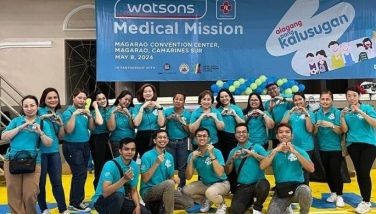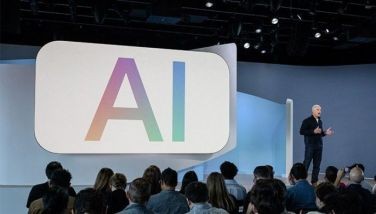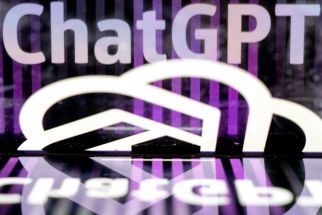A Liquid future via Nokia Siemens Networks
MANILA, Philippines - Surely, “evolve or perish†is a Darwinian tenet that not only applies to species but to corporate animals as well.
Nokia and Siemens, two established giants in telecoms, shook hands and shared dreams in April 2007 via Nokia Siemens Networks (NSN). In 2011, the company annexed Motorola’s wireless networks infrastructure business. Invoking the spirit of more than 120 years of telecom experience, the company registered close to 14 billion euros in net sales last year.
Today, the company’s R&D (with a significant, 460-personnel complement in the Philippines alone) helps keep it at the forefront of the mobile broadband realm.
It’s an exciting future that beckons Filipino users and shows us what could be. Truly, liberation from the shackles of today’s dawdling connection speeds is everyone’s primary concern, and it should surely interest you that NSN engineers are on the case.
The company now harps that it has made the biggest stride in mobile base station technology since the launch of the GSM 22 years back. “The mobile, or cellular, base station has been part of the network that just transmits and receives radio signals to create a connection with a mobile phone or device. Now, Nokia Siemens Networks is turning the base station into an intelligent part of a mobile operator’s network, to serve and deliver local content,†says NSN in a release.
Liquid Applications
The innovation is called Liquid Applications, and John Lancaster-Lennox, Nokia Siemens Networks Sdn. Bhd. Asia South head, explains that, “in simple terms, it’s a server at the base station.†Content is sent straight to the station. That means content can be adapted or localized.
“The big issue we have experienced for any service the delay it takes to get content,†he continues. “Often, that’s related to the speed of the Internet — not necessarily the speed of your own network. The whole idea is that a lot of content is put right on the base station so there’s no delay, and with very low latency.â€
In real terms, imagine checking your Facebook account on your smartphone. NSN’s Liquid Technology can store, say, the background of FB so that you don’t have to download everything from oceans away. “It can store regularly used pieces of the Internet,†Lancaster-Lennox explains, “though it’s a lot more than just regular caching.â€
Operators (or telcos like Smart, Globe, and Sun) “are also interested because their biggest concern is becoming this dumb pipe. This allows them to keep some intelligence — to be interactive and an important part of the eco-system.â€
A dumb pipe is a network being used to simply transfer bytes between the customer’s device and the Internet. In this case, the operator merely provides bandwidth and network speed.
The next metamorphosis of the mobile base station is good news, says the NSN exec, for “various over-the-top players (who) will have to work with the operators to make sure their content is on these servers onsite.
Local experience is marked with slow connections because, maintains Lennox-Lancaster: “You buy, say, your 10 megabits per second (Mbps) from your local provider, then when you access something you get 1.5 Mbps because of 52 different gateways you go through outside of the Philippines.â€
Unique Pinoy browsing habits
Nokia Siemens Networks Philippines country director Markku Nieminen adds that this is crucial because Filipinos are unique in their browsing habits in that they like more international content compared to Koreans or Japanese.
Still, there can be benefits to modernizing the mobile base stations for end-users. Aside from greater speed, users can take advantage of augmented reality applications, and realize the full potential of mobile gaming, which “has not really taken off,†rues Lennox-Lancaster. “I shoot you, you shoot me, and 10 minutes later we both die. That’s the traditional problem.â€
NSN is working with the telcos to get LTE (or Long-Term Evolution) off and running locally but, pending greater use of fiber optic cables, we still have a way off. Even with LTE, speed will always depend on bandwidth. “It’s a physics limitation,†he says.
But even now, as we struggle to play catch-up, the next chapter has begun with LTE Advanced. LTE (again, depending on bandwidth) can promise 100 Mbps per second. LTE Advanced can potentially deliver 150 Mbps.
There’s a way to achieve greater speed, but it will be dependent on bandwidth again, shares Lancaster-Lennox: “The way that’s done is by carrier aggregation. In effect, you take a chunk of, say 1800 frequency, you take a chunk of 2300 and you aggregate that down in one device, and a person’s experiencing, in effect, double benefit.â€
You can say NSN is working on the details to get to the bottom line of what it wants to be. “A year and a half ago, we were trying to be everything to everybody — all the spectrums of products in the telecoms sphere,†admits the NSN exec. “A lot of products outside of that we have sold, divested, shut down — equally keeping our R&D investment at the same level as it was before.†The NSN organization was also right-sized from a workforce of 75,000 to 60,000, and realized synergy savings.
The vision to become the leader in mobile broadband has reached fruition (number one in 3G, first or second in LTE) even as the company refuses to rest on its laurels. The significant investment in R&D even as NSN focuses on a narrower band of products guarantees even greater, more exciting things in the horizon. Nieminen points out that NSN wields a substantial portfolio of some 3,000 patents.
“Invest and continue to be the best. True innovation is the way to succeed,†concludes Lancaster-Lennox.
Sounds like something Charles Darwin would have said, indeed.
- Latest



























